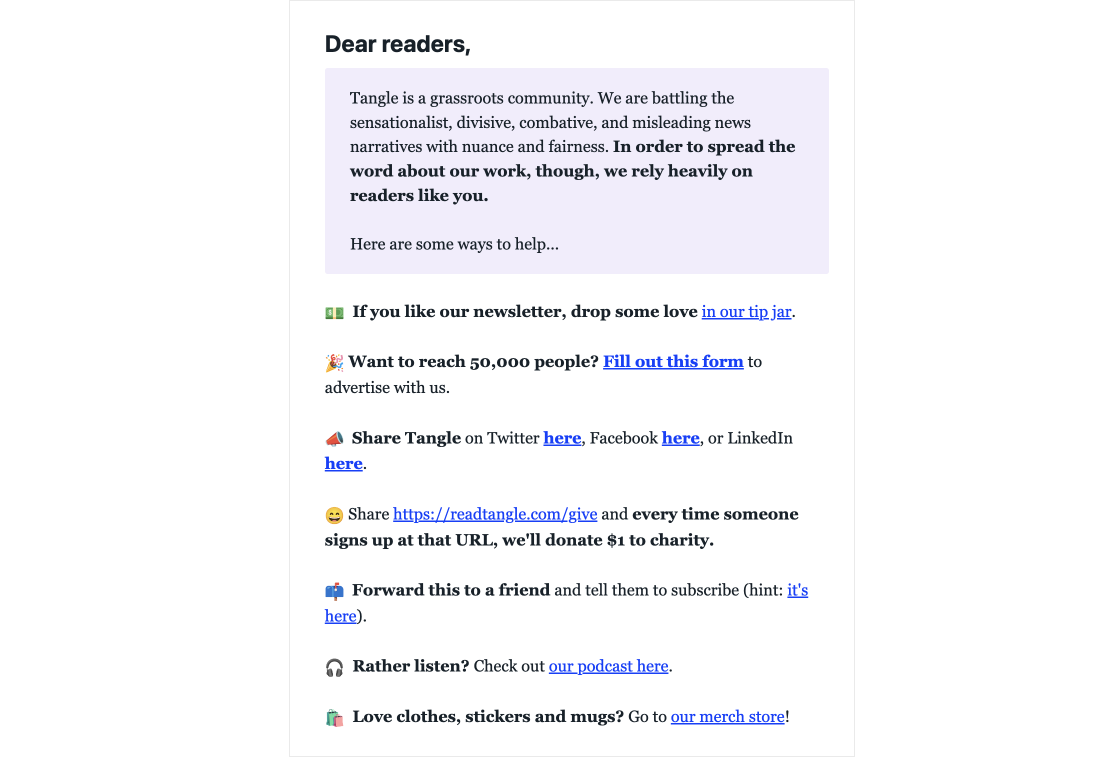The importance of word of mouth marketing for creators
A universal truth for every business, whether online, offline, subscription, or one-time purchase, is that they are dependent on marketing channels for growth.
Marketing channels come in lots of different forms: Social media, SEO, network/referrals, word of mouth, advertising, or any other method where people who haven't heard of your service before might hear about it for the first time.
Defining marketing channels
Different channels perform better for different businesses. For example:
- Word of mouth is a universal marketing channel that all businesses should spend time on (more on this shortly).
- SEO is more likely to be the #1 driver of traffic for products and content centered around solving a problem or gaining knowledge.
- Twitter tends to weigh more heavily for businesses based on news and trends.
- Instagram and TikTok are beneficial if you have a younger audience.
- If you have an older audience, they're more likely to be on LinkedIn or Facebook.
These are generalizations, not hard rules. Think of this as a starting point for where to experiment with your own marketing strategy.
Diversifying marketing channels is generally a good idea, but they will never perform equally. Most businesses will have 1 or 2 channels that drive the vast majority of their growth, and the rest will never come close. This is normal. The part that every business needs to spend time figuring out is which channels work best.

Answer these five questions to figure out which channels to experiment with first.
Adapting marketing channels over time
Most marketing channels also have a finite lifecycle — they work very well for a while, then eventually they plateau, either because the channel is saturated (everyone has heard of you), or the channel falls out of fashion.
As a content creator, it's important to remember that this doesn't necessarily mean you need to create content at a faster pace. Content repurposing is also an effective way to attract new readers.
I've written fresh social media content for older articles, and saw the exact same level of engagement, and new subscriptions. Very few social media readers noticed or cared that the article was a year old. They still liked, shared, and subscribed. The key is that what is shared on social needs to be stand-alone valuable enough to be worth sharing with their network.
— Dave Anderson, Scarlet Ink
When figuring out or re-evaluating what marketing channels to leverage, you may need to throw more things at the wall to see what sticks. During these times, keep a close eye on the results to see what works — drop things that don't work, and double down on things that do. This is especially important for solo creators and small teams, to prevent burnout.
The universal marketing channel: Word of mouth
The channel with the most longevity is word of mouth. The conversations your readers are having about you with other people are among your most valuable and powerful marketing assets.
If your existing customers are consistently mentioning you or sharing your work with new people, that tends to naturally transcend all the different forms of communication and social networks, even as they change around you.
The most common and direct example of encouraging word of mouth is to ask your audience to share your content. Publishers like Stratechery and Tangle do this by simply encouraging their subscribers to forward newsletters to their friends.
If your top performing posts are correlated to where you share them on social, then I think the lesson is that a lot of your audience are on that social platform. That's a good lesson, but I think it can be a narrow one. For example, I see very little traffic come to Tangle from Twitter these days. For me, word of mouth (people forwarding/suggesting the email), podcast appearances, and paid advertising in other newsletters are the #1 way I find new customers.
— Isaac Saul, Founder of Tangle.

The PartnerHacker newsletter gained an impressive 4,500 subscribers in the first 8 months after launching. During this time, they found that incentivizing signups with rewards via a referral program didn't work for them, and focused their efforts on LinkedIn where most of their audience hangs out. Their team has found a unique way to promote word of mouth: featuring their audience members directly in their content.
We focus on making our audience famous — we regularly highlight THEM and share things that our audience are doing/saying elsewhere, which makes them share our newsletter.
— Aaron Olson, Content Manager at PartnerHacker
Countless studies and surveys over the years have shown that consumers trust the recommendations of their peers more than marketing or advertisements directly from brands and businesses. They also found that that word of mouth recommendations strengthen the relationships between customers and brands, and that the majority of marketers agree that word-of-mouth is the most effective method of marketing.
Again, there is no magic bullet when it comes to selecting the right marketing channels for your business — but word of mouth is the one that you shouldn't ignore, and there are very clear actions you can take to start reaping its benefits today.
Focus on what's important
At the heart of finding the most impactful marketing channels and encouraging word of mouth is having something worth sharing. The takeaway? Focus on creating the best content for your audience, and getting it in front of that audience in the right places — then, ask your most loyal readers to pass it forward.







